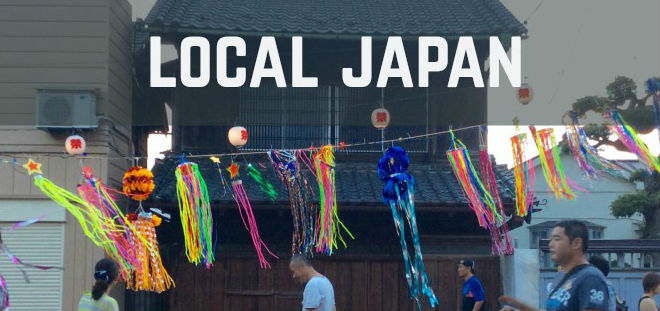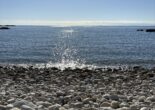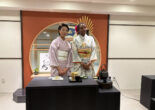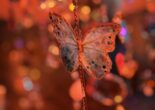
Local Japan: Right at Home in Noda City
For the last 15 years, I have lived in the suburbs of Tokyo in the area commonly referred to as Tokatsu. About 100 years ago, the area was endless rice paddies and horse pastures, with small villages dotting the post roads running to Nikko and Mito. Today, Tokatsu is divided up into cities from Funabashi in the south, to Noda City in the north, bounded by the Edo River to the west and the Tone River to the east.
The neighbourhood of Noda City in which I live now is right on the Edo River. The neighbourhood is often referred to by the name of the closest train station, Kawama, which means “between the rivers”. To give some idea of the location, Kawama Station is 10 minutes by train from Kasukabe Station, a major hub for Tobu trains, and the transfer point for going to Ikebukuro, Kawagoe and Nikko.
My partner and I both live and work in cities in the Tokatsu district, and we decided in 2016 to move out of our respective one-room apartments to a house closer to work. My partner first suggested Noda City. My image of Noda City, mostly gained from passing through on the Tobu Urban Park Line, was gray and industrial. Around Nodashi Station, you see a train yard, the giant tanks of the Kikkoman factory, and corrugated metal warehouses. It looked like a dreary industrial area. To convince me to reconsider, my partner took me to see Kawama, just 10 minutes north of the city center.
To my surprise, there is a semi-rural landscape, with farm fields, little patches of forest, and a residential neighbourhood. The neighbourhood is spacious with broad streets on a grid, street trees, detached houses, and parks.
The places in Japan I had previously called home were compact apartments in Matsudo and Kashiwa Cities, nearer Tokyo. There was little room for gardening, with narrow side yards and buildings looming over. The rooms were clean and bright enough, but with no place to which to retreat. And it was sometimes noisy. We were looking for a quiet place with a lot of trees, yet close to shopping and the train line.
The house we live in now in Noda City is large by Japanese standards. Developed during the economic bubble of the 80s and 90s, our neighbourhood is composed almost entirely of two story houses with large gardens. Twenty years ago, the builders of this area appealed to white collar families, public servants and executives. Our house, typical for this area, is a 4LDK (four rooms, living, dining and kitchen) with a wide entrance, two toilets and a bath with a stainless steel tub. We have a garden behind the house with camellia, hydrangea and gardenia trees. On rainy evenings, the sound of rain on grass and trees is very soothing, and that is almost all you hear.
Our rent is reasonable, less than half the rent of a comparable house in Tokyo. You may wonder why these high-quality houses are plentiful and cheap, and so many are available for rent. The main reason is the aging population in the area. Those who bought in our neighbourhood in the 1980s are now in their 70s and 80s. Gradually, the elderly are dwindling, and the houses are going empty as family members who live elsewhere do not have the time to maintain them, or the inclination to move here. Within a short walk of our house, a dozen houses lie empty and are neither on the market for sale, or available through a rental agency.
While we did enjoy our previous urban apartments for their proximity to central Tokyo, we much prefer our part of Noda City because it is green and quiet. From our front door to the Edo River bank is a one minute walk. The green areas of the Edo and Tone river flood plains to the east and west are home to a great variety of wildlife. We often see herons and hawks flying over our house, and in the local parks, we have spotted kingfishers and storks. We’ve encountered tanuki and masked palm civets. Our garden is also filled with tiny bats in the warm months. The most spectacular animal is the oriental stork, an endangered bird that is being captive bred and released into the countryside from a sanctuary in the southern part of the city.
There are many outdoor activities that only open spaces can accommodate. On the Edo River bank, there is a glider park, and we can see gliders over our house on sunny days. We have a few private and one public golf course to play. The city has built a cycling path along the two rivers and the canal.
Our favorite activity is to cycle along the rivers and through the city to take photos of the landscape, farms, and the few classic old buildings. The city is largely flat with a few gentle slopes. From our house on the Edo River to just about anywhere within the city limits is no more than a 30 minute ride, largely along country roads and through farm fields.
The biggest draw for visitors to the city is Shimizu Park. The attraction is the largest obstacle course in Japan. These obstacle courses, commonly called “field athletics” in Japanese, present the adventurous with water hazards, rope bridges, and wobbly gangways. The course welcomes children and adults, and on weekends, you can see costume-clad young people negotiating tricky tight-ropes and paths. It is popular with families, too.
Also in the park is the 14th century Konjoin Temple. The priest there opens the sanctuary for a monthly goma-taki fire ritual of mantras and offerings. Our favorite feature of the garden is a cherry tree that was planted in the first year of the Meiji Era and is the first tree to bloom. A great place to take photos is the great red gate, guarded by two Nyoo statues, with the cherry blossoms blowing in the breeze.
Besides the natural landscape, Noda City has a long history of soy sauce manufacturing that brought wealth and culture to the city. The soy sauce brewing families that became Kikkoman built grand estates, two of which are open to the public. On the grounds of the Noda City Museum is Mogi House, a Taisho Period building that has become a popular spot for television shoots and cosplayers. The other is the well preserved Kamihanawa Historic House and garden, dating from the Edo Period. The heart of Noda industry, the Kikkoman factory, also opens its doors to the public. The self-guided tour of the factory provides information in English, and a showroom and café provide a chance to taste a wide variety of soy sauce flavoured foods. Our favorite is shoyu ice cream, which is sweet, salty and malty. All of these sites are within an easy walk of Noda-shi Station on the Tobu Urban Park Line.Perhaps the best thing about Noda is the people. I often stop and talk to people strolling on the riverbank, and we get chatting about their dogs. The staff at the supermarkets, restaurants, and bakeries know all their customers, my partner and I included. We pitch in with the neighbourhood association clean up events and festivals, and get to know people that way. And then there are people I meet on my errands. In the summer, I stopped to watch a group of omikoshi bearers and got invited to the after party.
Our little city has a lot going for it, but currently the city’s tourism web page only has Japanese language information, and few of the volunteer tour guides speak more than basic English. Recently, some city business leaders have met up with residents, both foreign and local, to talk about improving and expanding the information for foreign residents and visitors to include English. The projects are just getting underway. For now, Chiba Prefecture publishes a digital pamphlet with a section on places of interest in Noda City.
Chiba Perfect Guide – Tokatsu 1
Chiba Perfect Guide – Tokatsu 2
My partner and I are now in our second year in Noda City, and we think we will stay long term, and we are considering our own projects for the future – buying land, building a house and starting a business in Noda. So far in my time in Japan, this is the town that suits me and my partner the best.
Related Articles
Wanna Sniff Animal Butts? Visit ATOA Aquarium — The Most Unique Aquarium in Kansai, Japan!
Warning: Undefined array key "sfsi_threadsIcon_order" in /home/veremosglobal/tokyoroomfinder.com/public_html/blog/wp-content/plugins/ultimate-social-media-icons/libs/controllers/sfsi_frontpopUp.php on line 165
Warning: Undefined array key "sfsi_blueskyIcon_order" in /home/veremosglobal/tokyoroomfinder.com/public_html/blog/wp-content/plugins/ultimate-social-media-icons/libs/controllers/sfsi_frontpopUp.php on line 170
Warning: Undefined array key "sfsi_bluesky_display" in /home/veremosglobal/tokyoroomfinder.com/public_html/blog/wp-content/plugins/ultimate-social-media-icons/libs/controllers/sfsi_frontpopUp.php on line 266



